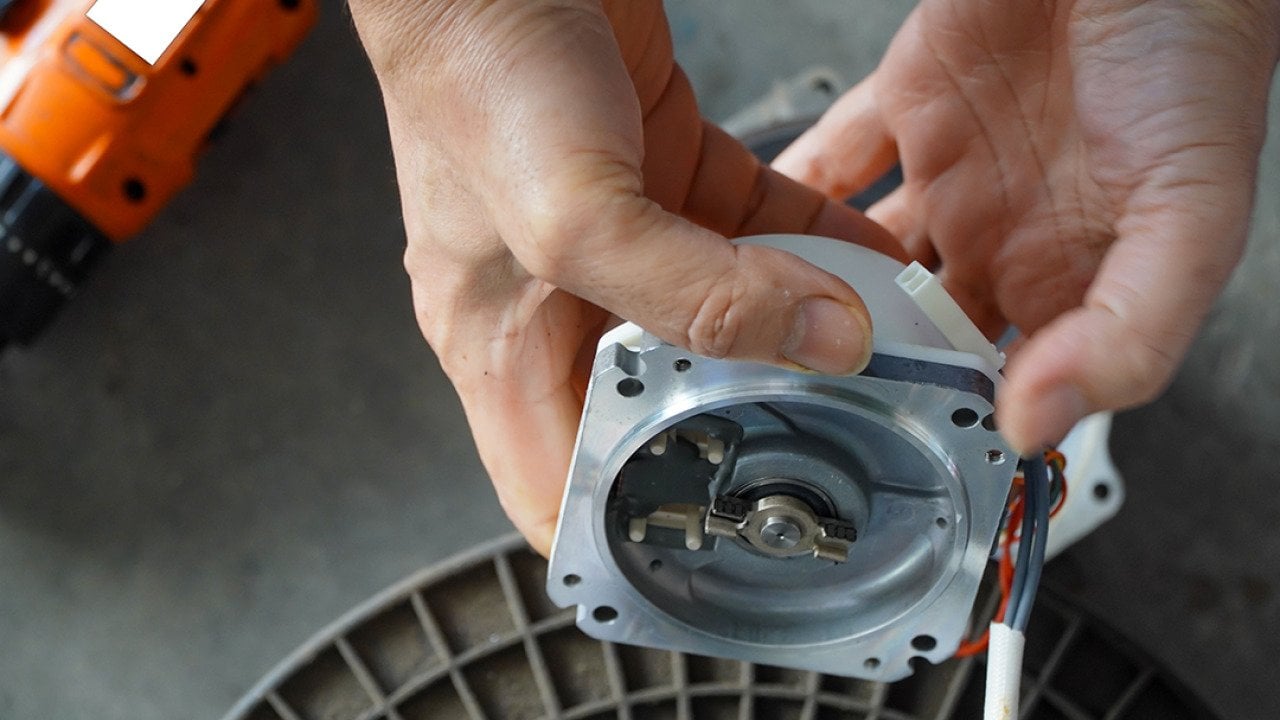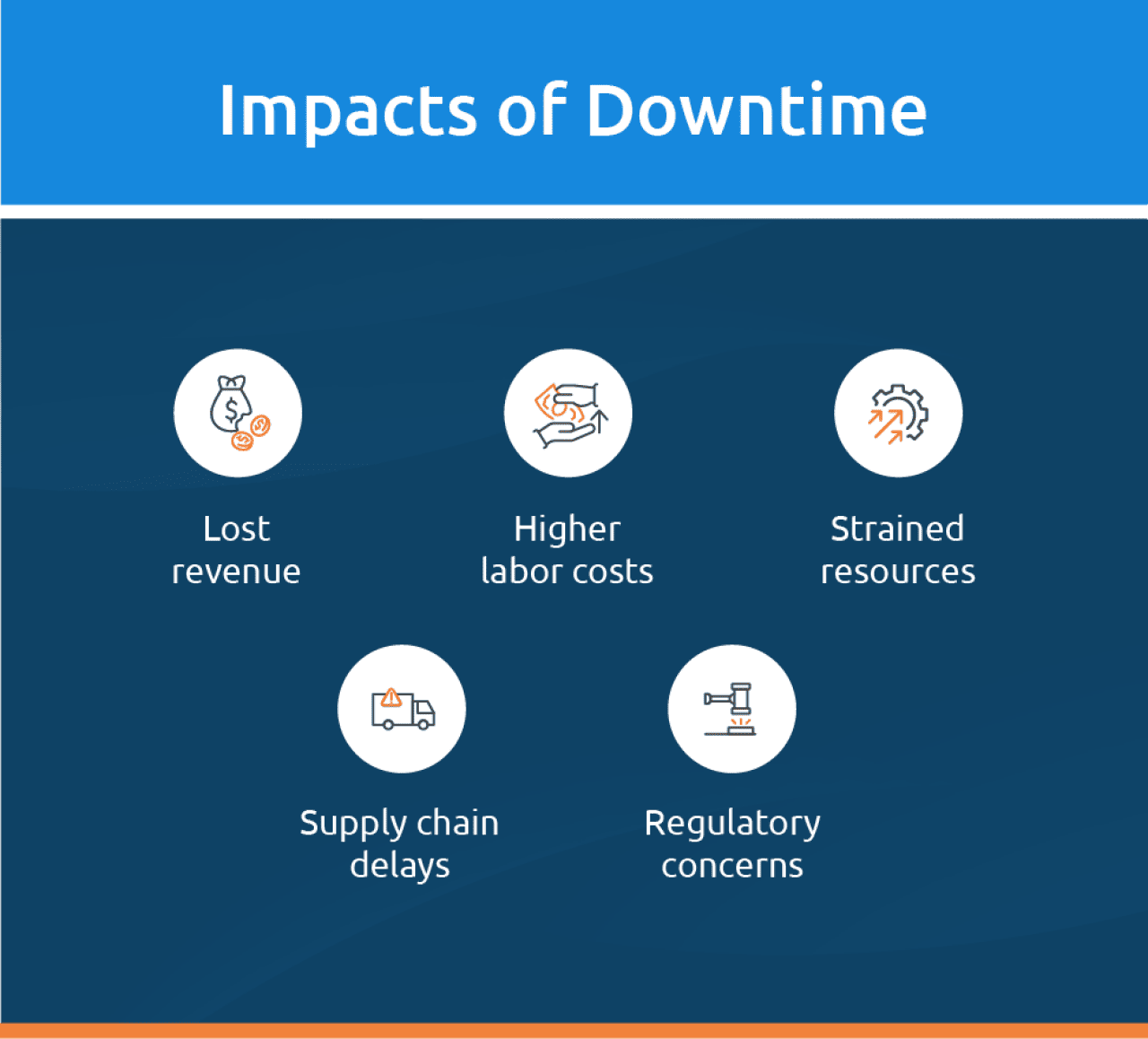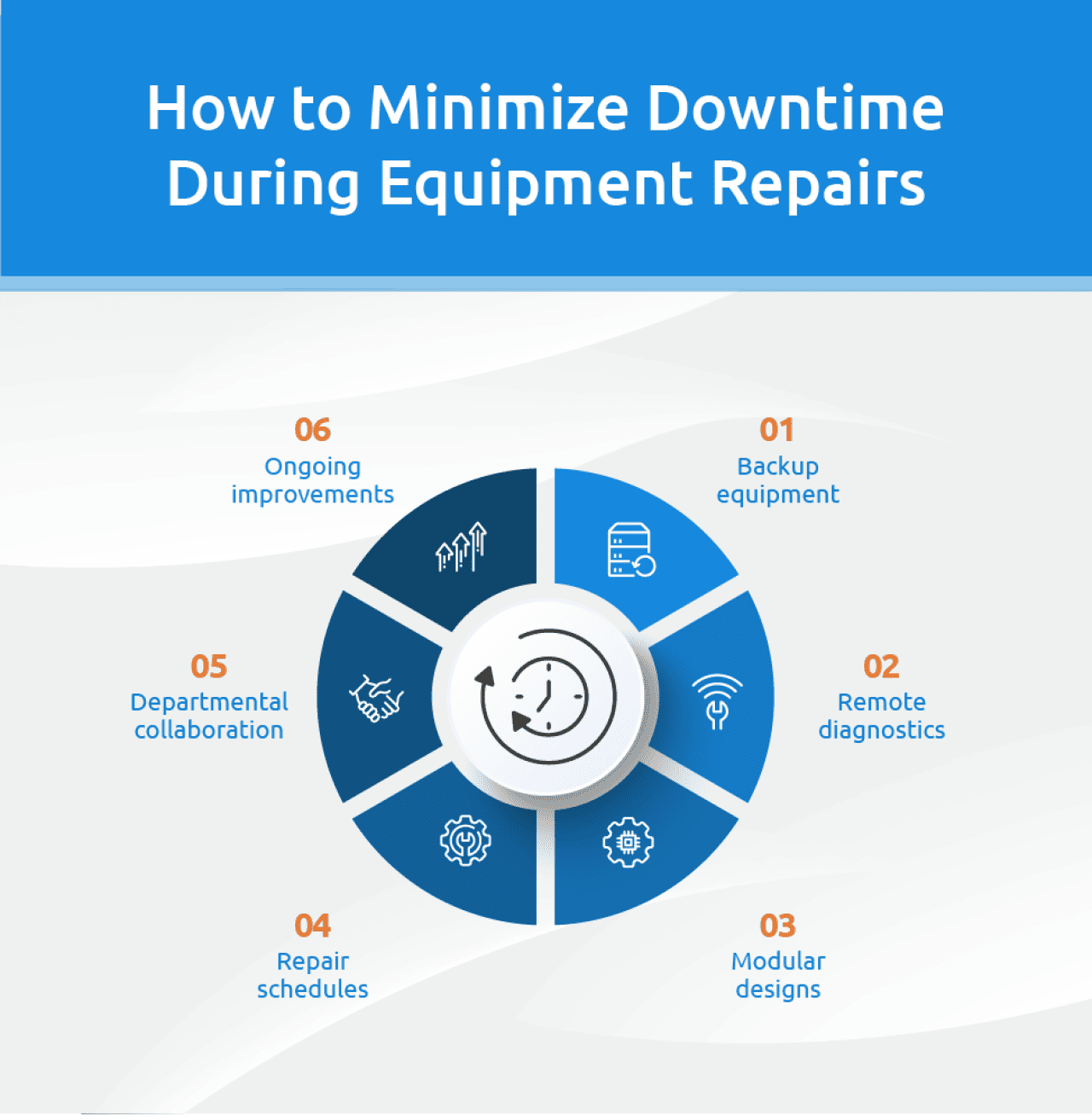How can industrial facilities minimize downtime during equipment repairs?

Rito Succeed // Shutterstock
How can industrial facilities minimize downtime during equipment repairs?
In industrial environments, downtime threatens productivity. It occurs when machinery is not operational, halting production. Sometimes, downtime is unexpected. Other times, it’s planned for routine maintenance. Whatever the reason, outages can significantly impact your facility’s production, deadlines and safety.
Manufacturing operations can improve profits by minimizing outages. This guide from Global Electronic Services explores strategies for reducing downtime and improving long-term efficiency.
What Causes Downtime in Industrial Settings?
Downtime is caused by planned or unplanned events. Facilities schedule planned events like service, inspections and upgrades. The operation controls these tasks and helps prevent more extensive issues. Unplanned stoppage occurs when machinery fails unexpectedly. Without planning, this downtime interrupts your operations and requires immediate attention to minimize production issues.
Unplanned system shutdowns include events like:
- Electrical issues: Short circuits, power surges or control panel problems can shut production units down.
- Operator error: Improper machinery use or a failure to follow procedure might lead to damage or outages.
- Mechanical failure: Worn-out components or poor lubrication can cause breakdowns.
- Poor maintenance: Equipment needs to be serviced regularly. Otherwise, problems can escalate into major damage.
- Parts shortages: A lack of replacement parts causes a delay in restoring operation. The longer the wait for replacements, the longer the downtime.
How Does Equipment Downtime Affect Production?
Any downtime can lead to financial, logistical and operational issues. Stoppage by itself is expensive for your operation. Unplanned downtime is typical in manufacturing, costing an estimated $50 billion every year, according to Deloitte. Add in logistical delays and operational problems, and production can come to a standstill. Across the board, outages lead to production problems.

Global Electronic Services
- Lost revenue: High-volume manufacturing depends on consistent output. Machine stoppages become missed quotas and delayed shipments, which will affect customer relationships and contracts.
- Higher labor costs: Staff might have to work overtime to compensate for production delays due to downtime. Once systems are restored, facilities need to catch up to their quotas. They’ll pay more in staffing costs and see increased waste if materials are incomplete by a certain time.
- Strained resources: When one system fails, others must compensate. This increases wear on backup systems.
- Supply chain delays: Surprise shutdowns can even trigger supply chain concerns. Operations might see inventory shortages, delivery delays and bottlenecks.
- Regulatory concerns: If you operate under strict regulations, outages may lead to compliance risks. Systems for quality control, safety or monitoring cannot perform during downtime.
How to Reduce Downtime in Production
Preventing outages starts with proactive maintenance and inspection strategies. The Pacific Northwest National Laboratory reports that investing in preventive service programs can lead to financial savings of 12% to 18% on average. Well-defined care schedules help teams track system issues.
Create Maintenance Schedules
Detailed machine schedules make tracking and maintaining systems efficient. These schedules should outline regular service intervals, parts replacements and inspection routines. All critical systems will need scheduling and documentation. The more regular your servicing schedule, the easier it is to catch issues early.
Stock Spare Parts
Waiting for shipments during emergencies can increase downtime. Instead, stock critical and most commonly used components on-site. Use maintenance schedules and documentation to track part replacements and your biggest replacement weak spots. With a solid parts inventory, facilities can begin repairs immediately.
Cross-Train Employees
Operations will struggle to stop shutdowns if only a few team members can handle diagnostics or restoration. Training more employees in these fields can reduce wait times for specialized technicians during emergencies. Cross-train employees on safe diagnostics and service practices so you can get machines up and running until a technician can do a more detailed inspection.
Invest in Technology
Digital tools and analytics make finding problems easier. Computerized maintenance management systems (CMMS) track assets, automate service reminders and store repair data. Internet of Things-enabled sensors constantly record critical asset and performance data. Predictive analytics takes this information and environmental data and anticipates failures before they happen.
How to Minimize Downtime During Equipment Repairs
Backups, remote diagnostics and modular designs are some of the strategies facilities can use to reduce shutdowns. Even with tuneup schedules, issues happen. How efficiently teams can respond during stoppage directly impacts how quickly outages get resolved. With these strategies, your team can maintain continuity and limit downtime:

Global Electronic Services
- Backup equipment: Redundant units in your most critical areas can minimize repair impact. Redundancy ensures that if one machine is down, another can take its place. Redundancy can be particularly beneficial for high-output lines or facilities with single points of failure. While redundancy is expensive upfront, it leads to long-term savings.
- Remote diagnostics: Internet of Things-enabled systems make remote troubleshooting simpler. Service teams can identify faults and prescribe solutions without being at the facility. This accelerates decision-making and replacements. Plus, remote access and data let technicians arrive on-site with the equipment and solution in hand.
- Modular designs: Equipment built with modular pieces lets teams swap out problem parts. Operations can avoid the shutdowns associated with disassembling and reassembling units. Facilities can shorten service windows and simplify logistics with modular equipment and well-stocked replacement parts.
- Repair schedules: Try to schedule conditioning during off-shifts or low-demand periods. Planned service on weekends or down seasons lets companies repair assets without impacting peak output times.
- Departmental collaboration: Repair strategies should include input from all maintenance, production and sourcing teams. Each group has expertise in its specific area. When they collaborate on solutions and data sharing, problem-solving becomes more efficient and successful.
- Ongoing improvements: Processes can always be more efficient. Evaluate tuneup schedules, troubleshooting processes and outage resolution to find weak points. Do teams think there is a way to make the process faster? Are resources redundant or wasted along the line? Talk to your team managers and work to tweak the process regularly to create a more effective system.
Why Is Documentation Critical to Handling Repair Delays?
Documentation gives you a record of past repairs and concerns, making resolving issues faster. Updated maintenance logs and detailed service records provide technicians with a clear history of previous problems, part replacements and services. This information helps teams identify patterns in system behavior. With detailed records, they can find recurring concerns and speed up diagnosis.
Thorough documentation also prevents staff from trying ineffective fixes or overlooking previously resolved problems. If technicians have already investigated systems for a mechanical concern, they can turn to its electrical systems next time the issue arises.
Industrial facilities will use paper or digital tracking systems for documentation:
- Paper-based tracking: Paper is inexpensive and traditional, but it’s slower to use. It’s easy to damage records or miss critical information. Paper systems might get stored out of order or lost during facility moves.
- Digital platforms: Digital documentation can integrate with your CMMS. This setup gives facilities centralized, searchable records that are never lost or damaged. Additionally, platforms make collaborating and accessing data easier and faster for technicians, improving downtime resolution.
Operations also need detailed documentation when working with repair services. Third-party technicians need to get up to speed quickly. Good records let experts evaluate the problem and unit history faster, allowing them to recommend a solution.
How Does Electronic Equipment Impact Downtime?
Electronic components are critical for keeping modern machinery running. When these systems fail, facilities could see an immediate shutdown across the operation. Unlike mechanical issues, electronic asset failures require specialized tools and experience to resolve. Without the right tools and technicians, facilities could see unsafe working conditions and extended outages.
It’s common to see electrical failures like:
- Power supply issues.
- Printed circuit board (PCB) burnout.
- Sensor reading errors.
- Programmable logic controller (PLC) faults.
- Wiring issues.
Without proper training, it’s difficult to detect these problems. If left unchecked, they’ll lead to erratic performance and unit shutdowns. It’s essential to have electronics repair capabilities or partners to resolve these issues safely. These services offer board-level diagnostics, component-level repairs and thorough testing to ensure equipment functions as intended.
How Do Electronic Equipment Repairs Reduce Downtime?
The faster and better your electronic system servicing, the shorter your shutdowns. Choosing to fix systems instead of replacing them can reduce lead times. Legacy equipment is difficult to source parts for — repairs let operations get up and running faster. Additionally, fixes are often more cost-effective. You avoid rapid shipping fees, part sourcing expenses and the larger price tag of replacing an entire unit.
However, facilities should not repair all assets. Sometimes, equipment is too old, damaged or difficult to repair. When the servicing costs and safety hazards become too high, businesses should talk to providers about replacements. They’ll help evaluate unit effectiveness and reliability to ensure you get the right services for your facility’s needs.
What Metrics Should Facilities Track When Trying to Reduce Downtime?
Reducing downtime means evaluating key metrics like time to repair, time between failures and machine effectiveness. Data shows operational patterns and bottlenecks. When you can access metrics, you can see if they improve over time or if areas are falling behind. Make sure you’re using these metrics to guide your facility:
- Mean Time to Repair: MTTR tracks the average time to complete a repair after failure. Lower MTTR values mean more efficient maintenance, which reduces unplanned outages. MTTR might increase if diagnostics or part sourcing are slow.
- Mean Time Between Failures: MTBF represents the average time between system failures. The higher the MTBF, the more reliable your tools and the more effective your preventive maintenance. If your service schedule is poor or you’re overworking equipment, MTBF might decrease.
- Planned Maintenance Percentage: PMP tracks the ratio of planned maintenance to total servicing hours. A higher PMP indicates more proactive maintenance, limiting shutdowns — the more effective your predictive maintenance, the better your PMP.
- First-Time Fix Rate: The FTFR tells facilities the percentage of tune-up or repair tasks completed correctly without the need for follow-ups. Higher FTFRs show that technicians have the training and resources to resolve issues efficiently. Poor documentation or a lack of resources can increase rework rates.
- Overall Equipment Effectiveness: OEE factors in performance efficiency, availability and quality. It shows teams how well a unit is operating compared to its full potential. Monitor OEE trends to see how downtime reduction efforts are impacting productivity.
Compare your metrics to industry standards or internal data. If your data is outperforming historical records or industry standards, facilitators know their methods are working. If metrics are falling behind, an issue needs to be resolved somewhere. Digital dashboards can help with tracking this information, while third-party repair experts can offer new solutions to address an operation’s unique concerns.
How Can Digital Tools Improve Repair Efficiency?
Technology makes diagnostics faster and provides real-time performance monitoring. This data lets companies limit their stoppages and make repairs more precise. Investing in cutting-edge technology can create a more efficient operation. Consider these tools to support your downtime reduction efforts:
- Remote guidance: Remote guidance and augmented reality help on-site technicians receive instructions or collaborate with off-site teams in real time. They can reduce guesswork and provide effective solutions, even when working with unfamiliar assets.
- Sensor technology: Industrial machines are equipped with advanced IoT sensors. These tools monitor vibration, temperature and performance. Sensors alert teams to anomalies before breakdowns, preventing an outage. Predictive maintenance can reduce downtime by 5% to 15% for facilities, according to Deloitte.
- Software platforms: CMMS and Internet of Things dashboards consolidate machine data. Facilities can view real-time status updates and automate repair or maintenance scheduling.
- Digital twin technology: Digital twin tools create virtual equipment replicas. These models let teams simulate failures and test repair solutions without slowing down production. Modeling scenarios allows facilities to predict how issues affect performance and the best way to solve them.
Building a Long-Term Strategy to Reduce Downtime
Reducing downtime is more than a maintenance issue — it’s a concern that directly impacts safety, productivity and a facility’s bottom line. Even short periods of unplanned shutdowns can lead to increased costs and missed deadlines for industrial and manufacturing operations. Investing in proactive planning, digital tools and reliable electronic repair services helps build a more resilient operation. Bringing everything together means creating a more efficient, effective process that keeps your productivity moving forward.
This story was produced by Global Electronic Services and reviewed and distributed by Stacker.
![]()



